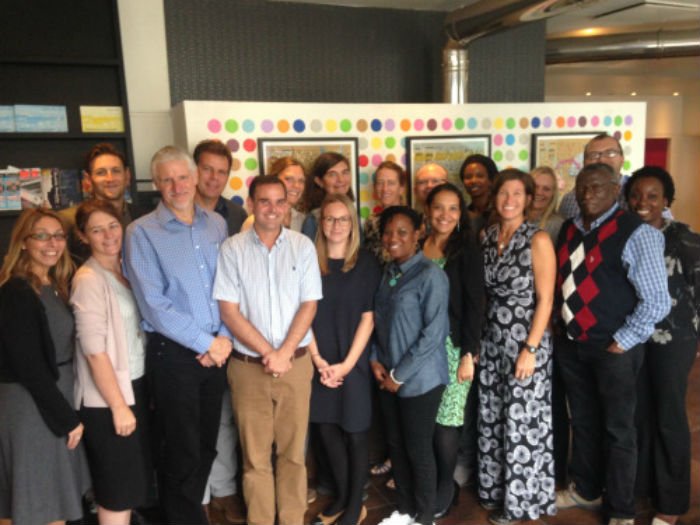Vaccines are sometimes called the backbone of the public health system. They are the first line of defense against infectious diseases, highly cost-effective, and meant to be available at every health facility, everywhere in the world, to protect health and save lives.
But the power of vaccines is lost if we don’t have the ways and means to deliver them safely and efficiently to those who need them most.
Last week, PATH organized a workshop with colleagues from UNICEF, John Snow, Inc., VillageReach, and Gavi, the Vaccine Alliance in Copenhagen to develop advocacy strategies for building stronger immunization supply chains in low- and middle-income countries. These strategies are an important step in building political will and fostering a favorable policy environment for introducing next-generation supply chain solutions.
What is the immunization supply chain?

To see it is to help understand it. The photo above shows a health worker preparing to give Japanese encephalitis vaccine during an immunization campaign in Laos. Within the photo are clues to a strong immunization supply chain system.
Notice the cooler in the foreground keeping the vaccines at just the right temperature after a long journey from the manufacturer to the health post? See the health worker preparing her ledger to track the number of vaccines given and vials consumed? Supply chains are the human resources, technologies, and systems required to get vaccines safely and efficiently from the point of manufacture to the point of immunization without compromising potency or availability.
Supply chain challenges today
We have entered a new era for immunization. Vaccines that prevent diseases like cervical cancer, rotavirus diarrhea, and pneumonia are now available in even the poorest countries. And dozens of other vaccines, designed for use in low-resource settings, are in the development pipeline that will address some of the world’s greatest public health challenges. This growth is exciting, but it adds pressure to already-stressed immunization supply chains.
Most supply chain systems were developed 30 years ago, when immunization schedules were much smaller and simpler, vaccines were less expensive, and immunizations were only given to infants. Vaccines now protect against twice as many diseases, are administered to broader age groups, and take up a lot more space in warehouses, trucks, and refrigerators.
To manage today’s immunization programs, countries are starting to recognize the need to build stronger supply chains, but they often lack the political will, tools, and resources to do so.
Next-generation supply chains: the fundamentals
What do next-generation supply chains look like? According to Gavi’s immunization supply chain strategy (2014), they are built on five fundamentals:
-They are designed to optimize safety, reliability, and efficiency of immunization programs.
-They are led by competent, professionally trained supply chain managers.
-They use a continuous improvement approach for assessing, planning, and implementing supply chain changes over time.
-They collect and use data for decision-making.
-They use, monitor, and maintain high-quality cooling equipment to ensure proper temperatures along the supply chain.
Solutions for stronger supply chains
Policies that support the five fundamentals are an important step in improving supply chains for achieving immunization goals.
Gavi and partners have formed five priority working groups to support countries to achieve each of these fundamentals and provide guidance and tools. At the workshop last week, participants representing each priority working group identified potential policy solutions to strengthen supply chains and then designed strategies to put them into practice.

Supply chains can have a significant impact on vaccine coverage. While several countries are piloting new supply chain solutions, more political leadership is needed before major, systemic changes can be made and scaled-up.
Policy support for each of the five fundamentals of the supply chain would represent a major change for the better. By advocating for such policies, we aim to help ensure that vaccines live up to their promise to improve health and save lives around the world.
This article was written by Heidi Lasher, project coordinator for immunization supply chain advocacy at PATH.
Learn more about PATH’s work in advocacy for stronger immunization supply chains here.
Learn more about PATH’s advocacy capacity building services here.